Your 2025 Laser TV Buyer’s Guide
What is a Laser TV?
A Laser TV is like a mix between a giant projector and a regular TV. You get a huge screen without the hassle of mounting a projector or paying for a massive flat-panel TV.
Why Choose a Laser TV?
Since the pandemic, people want big-screen, home-theater experiences. TVs are getting bigger:
65″ is now standard
75″ is growing in popularity
50″ often goes in guest rooms
But 85″ and above? Super expensive, heavy, and hard to move. Laser TVs give you a huge screen without the headache.
Laser TVs vs Traditional Projectors
Old-school projectors often mean:
Ceiling mounts
Dark rooms
Bulky equipment
Weak speakers
Expensive bulbs
Laser TVs solve these problems with ultra-short throw (UST) tech. They:
Sit inches from the wall
Work in bright rooms
Include built-in speakers and smart apps
Last tens of thousands of hours
Perfect for homes, classrooms, or offices.
Why We Love Them
Laser TVs are a cost-effective way to get a big-screen experience—often cheaper than huge flat panels. They’re becoming more affordable, easier to use, and packed with smart features.
What to Look For in a Laser TV
1. Brightness
A Laser TV should look great day or night. Most models today are brighter than some TVs. They also:
Turn on instantly
Last 20,000+ hours
Run quietly
Produce less heat
2. Smart Features
Laser TVs are modern and convenient. Look for:
Built-in apps (Netflix, YouTube, Prime Video)
Full app stores (usually Android)
Voice control
Mobile screen casting
Most don’t include over-the-air tuners, so apps are key for cord-cutters.
3. Audio
Thin TV speakers often sound weak. Laser TVs have bigger speakers and may support:
Wireless subwoofers
HDMI eARC for surround sound
4. Convenience
Laser TVs:
Sit inches from the wall
Avoid ceiling mounts
Don’t cast shadows
Require no bulb replacement
Keep brightness for their lifespan
5. Stylish Placement
Many models can blend into your room with:
Furniture or cabinets
Retractable screens
Minimalist setups
Summary
Laser TVs give huge screens at lower cost per inch than flat panels. They’re easier to move, last longer, and come with smart features and solid audio. You can enjoy a 100″+ image without the hassle or cost of a massive TV.
Featured Model: Leica Cine 1 – sleek, stylish, and high-performing.
How We Review
We test Laser TVs for real-world use: living rooms, budget setups, specialized rooms, and more. Our guide highlights the best models for different needs, with links to full reviews and specs.
2024 Laser TV Buyer’s Guide – Under $4,000
n this section, we’ve grouped Laser TVs by price to make choosing easier. These are the entry-level and mid-range models. We’ve tested every product listed, and many have even won awards—so you can get a great Laser TV without spending a fortune.
XGIMI Aura 4K Ultra Short Throw Smart Laser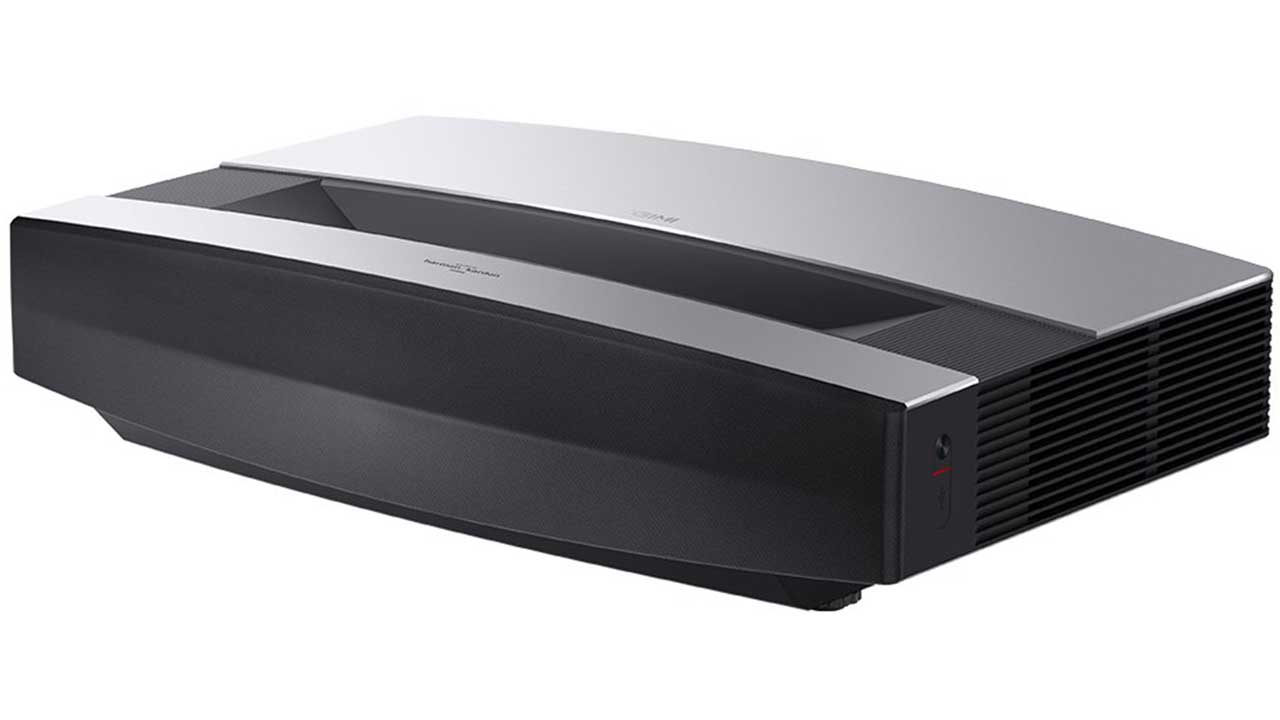
XGIMI Aura – Value Leader
Price: $2,499
Brightness: 2,400 lumens
Resolution: 1920x1080x4 (4K)
Light Source: Laser (25,000-hour lifespan)
Imager: DLP with XPR (0.47” DMD)
Inputs: 3× HDMI 2.0
Smart Features: Android TV, Google Assistant
Sound: 60W Harman/Kardon (2×15W tweeters + 2×15W woofers)
Bundled Screen: No
TV Tuner: No
The Aura is XGIMI’s first ultra-short throw (UST) projector, and it’s a real value at $2,499. It starts up super fast—our reviewer timed it at under 12 seconds.
You can place it 17.3 inches from the wall to get a 150-inch image, or just 4.3 inches away for an 80-inch image—perfect if you’re short on space.
The Aura uses a 0.47-inch DLP chip and a 2,400-lumen laser to deliver 4K resolution with HDR10 support, covering up to 90% of Rec. 709 and 80% of DCI-P3 color.
It also has built-in audio: a 60W Harman/Kardon system with two tweeters and two woofers.
Plus, it’s a smart projector with Android TV 10.0 and Google Assistant, so you can run apps and control it with your voice—just like a smart TV.
VAVA VA-LT002
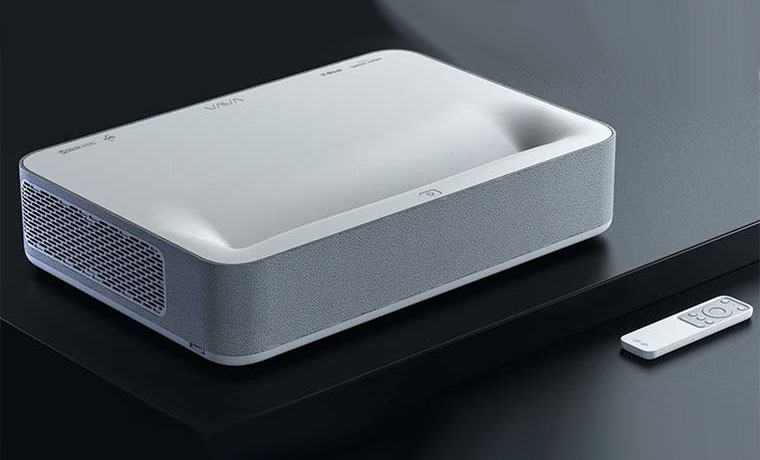
VAVA – Super Budget-Friendly Laser TV
Price: $2,799
Brightness: 2,500 lumens
Resolution: 3840×2160 (4K UHD, pixel-shifting DLP)
Light Source: Laser (25,000-hour lifespan)
Inputs: 3× HDMI, 1× USB
Smart Features: Android system, Google Assistant, Alexa
Sound: 60W Harman Kardon
Bundled Screen: No
TV Tuner: No
The VAVA is an affordable ultra-short throw (UST) 4K projector with a built-in media player. Its 60W Harman Kardon audio delivers solid sound, and HDR10 support gives good color and detail.
It’s not the brightest at 2,500 lumens, but paired with a proper screen, it handles rooms with some ambient light. The VAVA also has Bluetooth input and output to connect extra speakers or headphones.
This projector won Projector Reviews’ Special Interest Award in 2019, proving it’s a strong choice for first-time Laser TV buyers—even if the 1-year warranty is a bit shorter than usual.
If you’re new to projectors, adding a VAVA and a proper screen to your living room is likely to impress.
JMGO U2 LASER TV
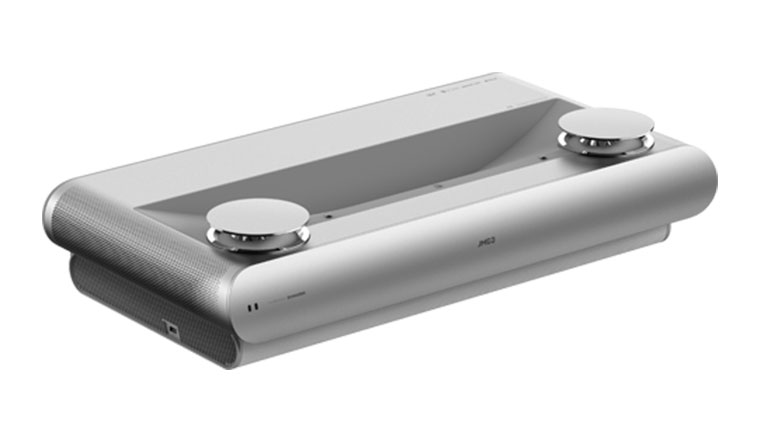
JMGO U2 – Kickstarter-Funded Laser TV
Price: $2,999 (sometimes $2,599 on sale)
Brightness: 2,400 lumens
Resolution: 1920x1080x4 (4K via pixel shifting)
Light Source: Laser (50,000-hour lifespan)
Inputs: 2× HDMI 2.0, 2× USB 2.0
Smart Features: Luna OS (Android-based), Alexa, Google Assistant
Sound: Dolby Surround – 15W×2 speakers + 10W×2 tweeters
Bundled Screen: No
TV Tuner: No
The JMGO U2 is a 4K ultra-short-throw projector with a Tri-Color laser delivering bright, clear images. It’s rated to last 50,000 hours and comes with a 1-year warranty and 30-day money-back guarantee.
Its Luna OS, built on Android, makes it easy to stream shows, check weather, or use gadgets like a music visualizer. Voice control is built-in via Alexa and Google Assistant, so you can manage lights, movies, or smart devices directly from the remote.
The U2’s large chassis allows for big, booming sound. Speakers co-designed with Dynaudio provide solid bass, clear dialogue, and Dolby/DTS surround support—great if you don’t want an external sound system.
It also includes a built-in media player that can play 4K content from USB drives, supporting formats like MVC, ISO, H.265, VC-1, JPEG, and MP3.
If you want a massive TV-like experience for your living or theater room, the JMGO U2 is a strong pick—bright, smart, and low maintenance.
BENQ V7050I 4K LASER TV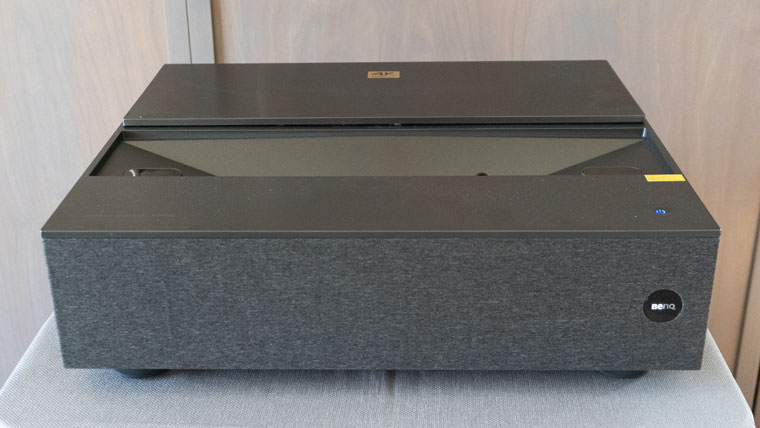
BenQ V7050i – Stylish New Laser TV
Price: $3,499
Brightness: 2,500 lumens
Resolution: 3840×2160 (via 1920x1080x4 pixel shifting)
Imager Type: DLP
Light Source: Laser (20,000 hours normal / 30,000 hours ECO)
Inputs: 2× HDMI, USB
Smart Features: Google-certified Android TV stick, Google Assistant
Sound: treVolo-tuned 5W×2 virtual surround stereo
Bundled Screen: No
TV Tuner: No
The BenQ V7050i is a sleek, beautifully designed ultra-short-throw Laser TV. It projects a bright 4K image using a 2,500-lumen laser and a .47″ DLP imager. With HDR-Pro™ and BenQ’s CinematicColor™ technology, it covers 98% of the DCI-P3 color space for crisp, colorful, and cinematic-quality visuals.
The built-in treVolo-tuned audio system delivers solid virtual surround sound, so a separate speaker system isn’t necessary for a great home theater experience.
As a smart projector, the V7050i includes a Google-certified Android TV stick, giving access to popular streaming apps. You can also use Google Assistant or Alexa for voice control.
Our reviewer said: “The V7050i delivers a noticeably crisper, more detailed, and colorful image than any other ultra-short-throw projector in its class. It’s superb.”
Philips Screeneo U4 Ultra-Short-Throw 4LED
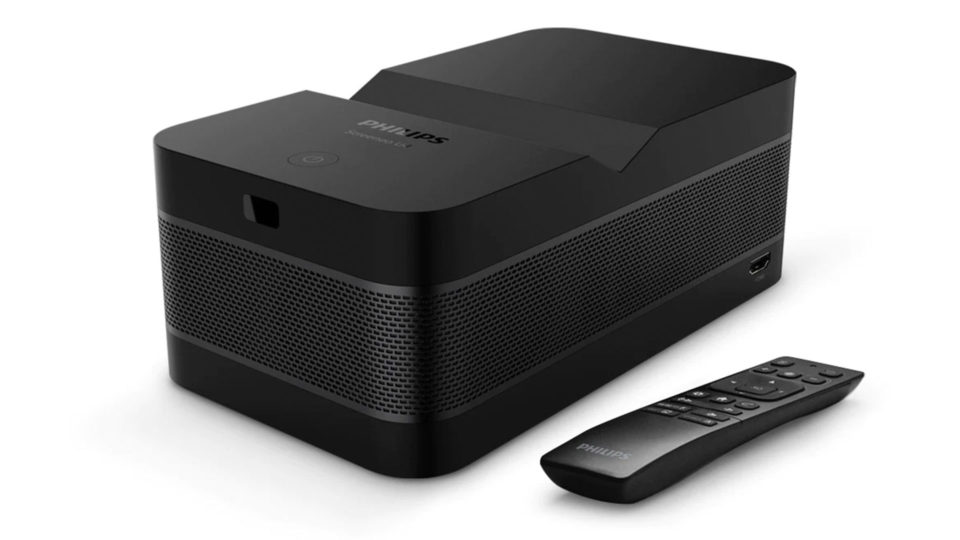
Philips Screeneo U4 – Compact and Stylish
Price: $669
Brightness: 400 ANSI lumens
Resolution: 1080p (1920×1080)
Imager Type: DLP
Light Source: 4LED (RGGB), 30,000 hours
Inputs: 2× HDMI 2.1 (1 HDMI ARC, HDCP 2.2)
Smart Features: Built-in media player
Sound: Dual 15W speakers
Bundled Screen: No
TV Tuner: No
The Philips Screeneo U4 is a budget-friendly, ultra-short-throw projector with a modern design. It’s compact and portable, ideal for dark-room viewing with an 80-inch image for the best brightness and contrast, though it can project between 35 to 120 inches.
Setup is simple and flexible—you can place it on a table, a tripod, or ceiling mount. With the built-in tripod socket, it’s easy to adjust the projector physically for perfect alignment. This method is better than relying on digital keystone correction, which can slightly reduce image quality or affect gaming input lag.
The Screeneo U4 also includes 4-corner geometry correction, handy if you ever need to project on an uneven surface while traveling.
JMGO O1 PRO UST Smart LED Projector
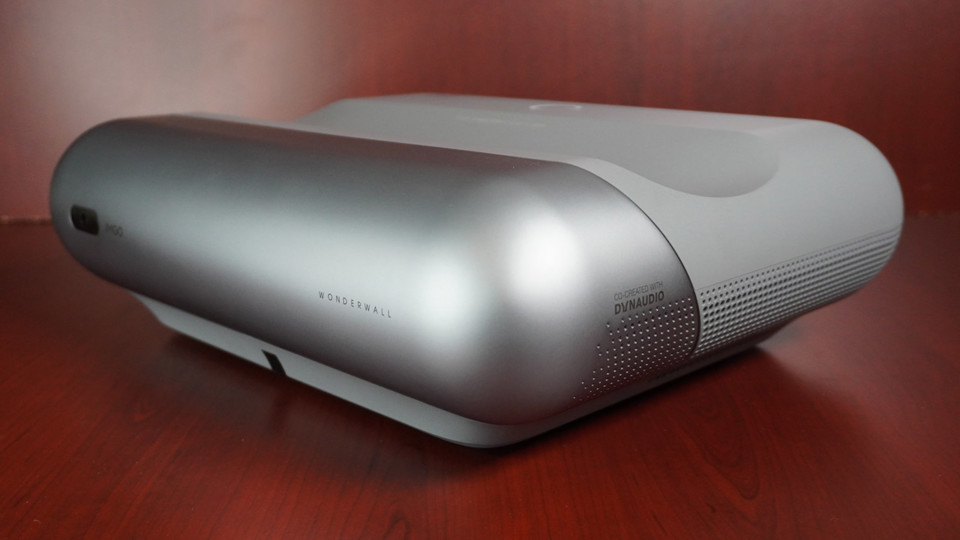
JMGO 01 PRO – Full HD Ultra-Short-Throw Projector
Price: $1,699.99
Brightness: 1250 lumens
Resolution: 1080p (1920×1080)
Imager Type: DLP
Light Source: Leica-tuned LED, 45,000-hour lifespan
Inputs: 2× HDMI 2.1 (1 HDMI ARC), 2× USB 2.0
Smart Features: Android-based Luna OS
Sound: 10×2 system tuned by Dynaudio’s chief acoustic engineer
Bundled Screen: No
TV Tuner: No
The JMGO 01 PRO is a Full HD ultra-short-throw LED projector that brings a big-screen experience to your home at a budget-friendly price. Co-engineered with Leica for its LED light and tuned by Dynaudio for sound, it promises crisp visuals and solid audio right out of the box.
Powered by Luna OS, JMGO’s Android-based smart system lets you stream content and access apps just like a smart TV. Setup is simple, and the projector is designed to deliver bright, sharp images with good color and contrast, making it a solid choice for home entertainment.
This projector competes well in its price range, offering a balance of performance, features, and value, especially for those looking for an all-in-one ultra-short-throw solution.
VAVA Chroma VA-SP003 4K
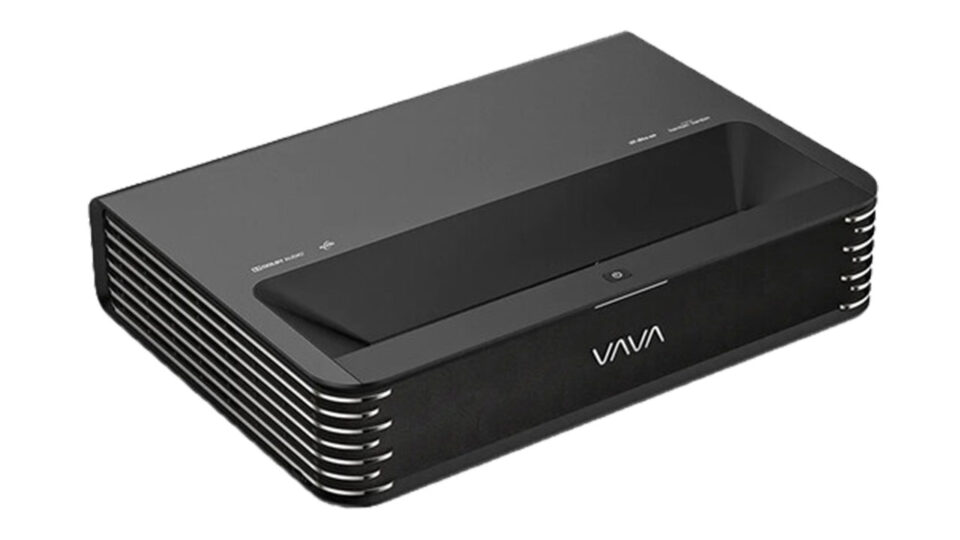
VAVA Chroma – 2nd Generation Ultra-Short-Throw Projector
Price: $2,999 MSRP
Brightness: 2,500 ANSI lumens
Resolution: 1080p x4 (3840×2160)
Light Source: ALPD 4.0 tri-color laser, 25,000-hour lifespan
Inputs: 2× HDMI 2.1 (1 HDMI ARC), 2× USB 2.0
Smart Features: Android OS with voice control (Alexa)
Sound: Harman Kardon, 30W × 2 Dolby-powered speakers
Bundled Screen: No
TV Tuner: No
The VAVA Chroma VA-SP003 is VAVA’s second ultra-short-throw projector, building on the success of their first model. It uses a triple-laser ALPD 4.0 light engine for bright, sharp images and supports large projections from 80″ up to 150″.
This projector features Android-powered smart capabilities with Alexa voice control and a powerful Harman Kardon/Dolby sound system for a cinematic experience right at home. It originally launched on Indiegogo, raising $7.8 million—one of the platform’s most-funded campaigns of 2021.
While priced around $3,499 MSRP, promotions often bring it down to $2,999 or less. The VAVA Chroma offers a solid mix of performance, smart features, and audio quality, making it a strong contender for home theaters in 2023.
WEMAX Nova 4K
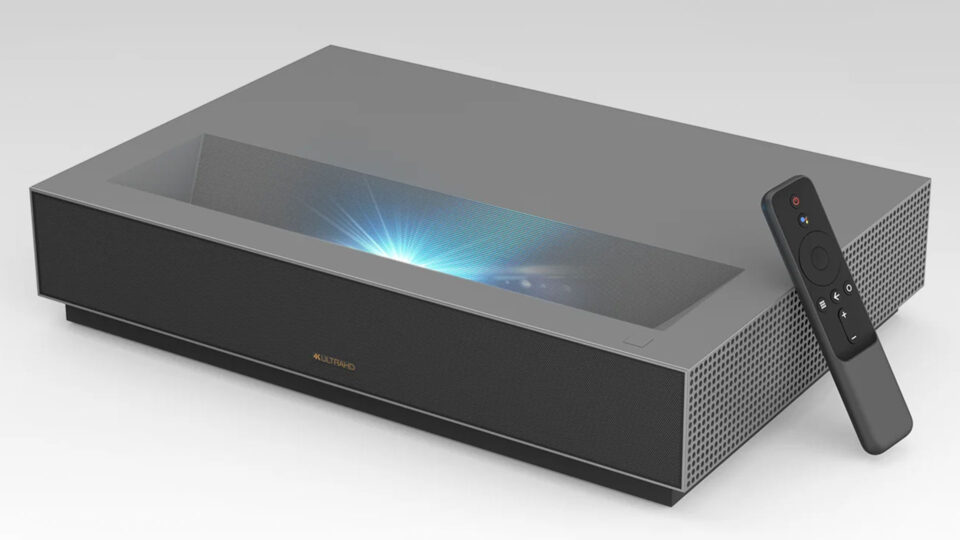
WEMAX Nova – 4K Ultra Short Throw Laser TV
Price: $2,699
Brightness: 2,100 ANSI lumens
Resolution: 3840×2160 (4K)
Light Source: ALPD laser, 25,000-hour lifespan
Inputs: 2× HDMI 2.1 (1 ARC), 1× USB 2.0
Smart Features: Android TV 9.0 with Google Assistant
Sound: 30W (10W ×2 full-range, 5W ×2 tweeter)
Bundled Screen: No
TV Tuner: No
The WEMAX Nova is a smart 4K ultra-short-throw projector with ALPD laser technology and a FOFO contrast ratio of 3,000:1. It can project up to 150 inches and covers 100% of the Rec. 709 color gamut.
The Nova looks a lot like the Formovie THEATER, even sharing similar startup screens. WEMAX is part of Appotronics, while Formovie belongs to Fengmi/Xiaomi, focusing on domestic and B2B markets. WEMAX targets international online buyers, offering a more globally-oriented, competitively priced option.
Choosing between the Nova and Formovie THEATER mostly comes down to personal preference and needs, though they’re very similar in design and performance.
Optoma CinemaX D2
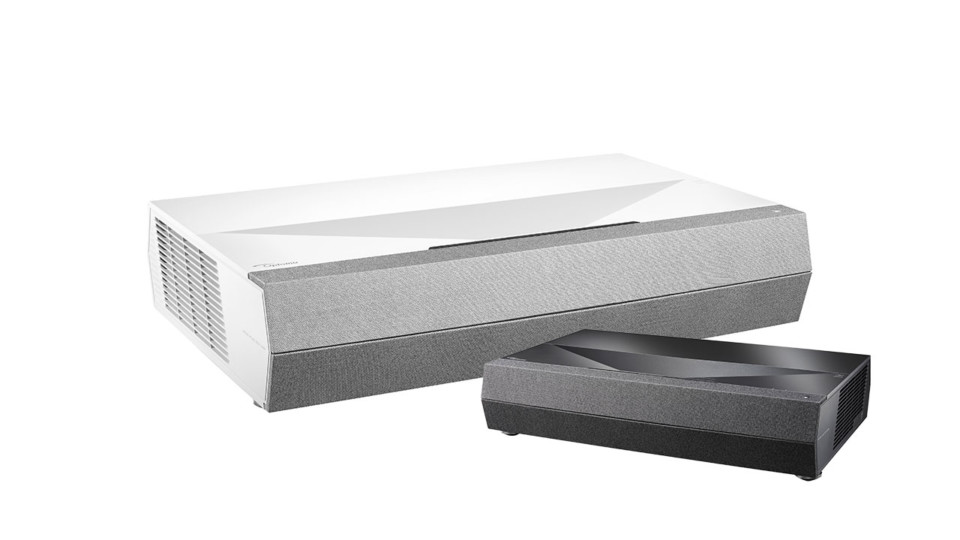
Optoma CinemaX D2 Smart – Ultra Short Throw 4K Projector
Price: $2,699
Brightness: 3,000 Lumens
Resolution: 3840×2160 (4K via pixel shifting)
Light Source: Laser, 20,000-hour lifespan
Inputs: 2× HDMI 2.1 (1 ARC), 1× USB 2.0
Smart Features: Android TV 11 (external)
Sound: 10W ×2 Dolby Digital
Bundled Screen: No
TV Tuner: No
The Optoma CinemaX D2 Smart is a laser-powered ultra-short-throw projector delivering 4K visuals at a bright 3,000 lumens. Optoma has been a leader in projection since 2004 and is currently the world’s #1 4K UHD projector brand.
The D2 series follows last year’s award-winning CinemaX P2. The main difference between the D2 and the D2 Smart is the external smart media device on the Smart model—the picture and sound performance are otherwise identical.
With the D2 Smart now priced at $2,699 (down from the P2’s $3,299), it’s a strong contender in the ultra-short-throw projector market.
LG CineBeam HU715Q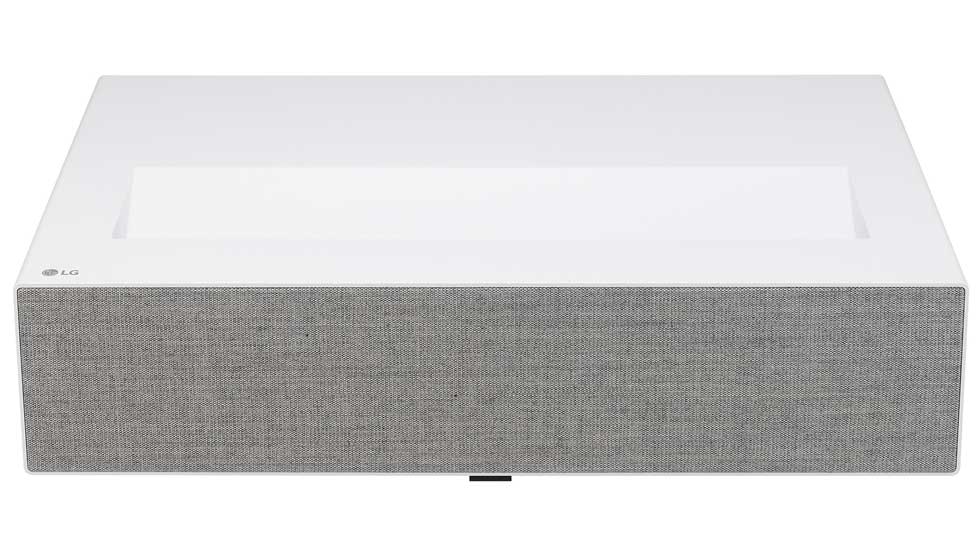
LG HU715Q 4K UHD Laser UST CineBeam Projector
Price: $2,999
Brightness: 2,500 ANSI lumens
Resolution: 4K (3840×2160)
Light Source: Laser, 20,000-hour lifespan
Inputs: 2× HDMI 2.1 (1 ARC), 1× USB 2.0
Smart Features: LG webOS 6.0 with streaming apps and voice control
Sound: 40W built-in 2.2-channel audio system
Bundled Screen: No
TV Tuner: Yes
The LG HU715Q is a 4K ultra-short-throw (UST) projector that brings many TV-like features to your home. Depending on how far it’s placed from the wall, it can project an 80-inch image from just 4.6 inches away or a 120-inch image from 12.5 inches.
This projector runs LG’s webOS 6.0, giving you built-in access to popular apps like Netflix, Disney+, Prime Video, YouTube, and Apple TV. Voice control via LG ThinQ AI lets you manage the projector and other compatible smart devices using Google Assistant. It even has a built-in web browser.
For audio, the HU715Q features a 40-watt 2.2-channel system with front-facing tweeters and woofers plus rear woofers for enhanced bass—so you get full-range sound without extra speakers.
ViewSonic X2000B-4K
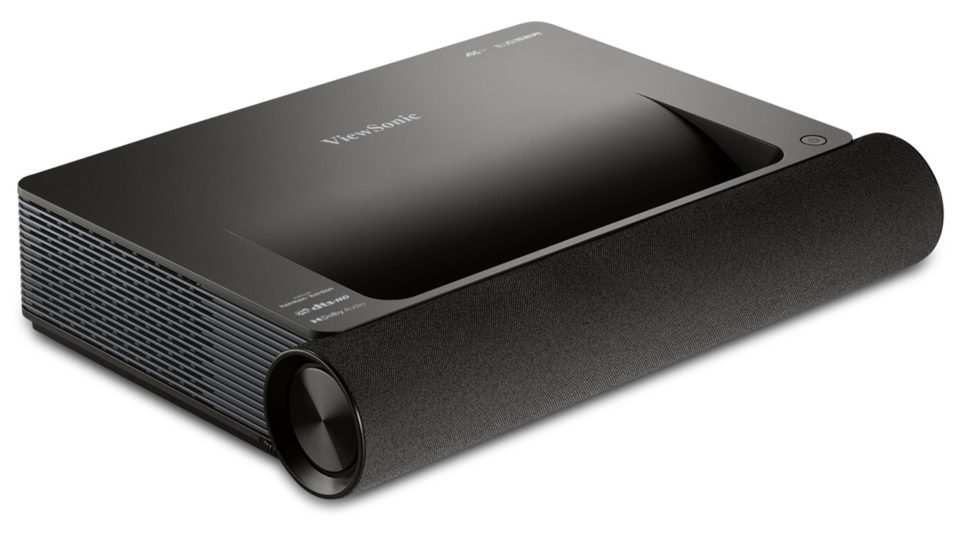
ViewSonic X2000B-4K Ultra-Short-Throw Laser Projector
Price: $3,098.99
Brightness: 2,000 ANSI lumens
Resolution: 4K (3840×2160)
Light Source: Laser Phosphor, 20,000-hour lifespan
Inputs: 2× HDMI 2.0b, 2× USB 2.0, LAN, 3.5mm audio
Smart Features: Yes, with Wi-Fi and screen mirroring
Sound: 50W Harman/Kardon with Dolby Audio/DTS-HD
Bundled Screen: No
TV Tuner: No
The ViewSonic X2000B-4K is a sleek, smart ultra-short-throw projector with second-generation laser phosphor technology for brighter, heat-resistant performance in a compact design. The laser can last up to 20,000 hours, giving you years of home entertainment with vibrant Cinema SuperColor™.
Thanks to built-in Wi-Fi, you can mirror content from iOS and Android devices easily. The Harman/Kardon audio system fills the room with powerful sound and supports Dolby Audio and DTS-HD.
With a 0.22 ultra-short-throw lens, the X2000B-4K can project a 100-inch 4K image from just 10.3 inches away. It supports HDR, HLG, and Rec. 709 color gamut for vivid images.
Setup is flexible—you can place it on a table, media stand, or ceiling mount. Plus, features like 4-corner keystone adjustment and warping let you project onto screens, flat walls, or even curved surfaces with ease.
Epson EpiqVision Ultra LS800 3LCD
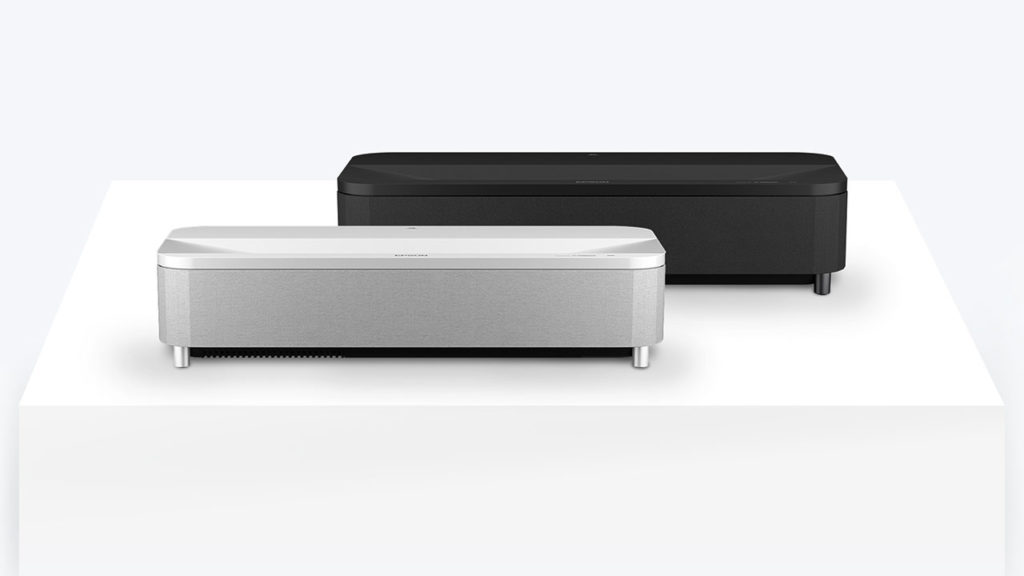 of the best looking out-of-the-box ultra-short-throw projectors
of the best looking out-of-the-box ultra-short-throw projectors
Epson EpiqVision Ultra LS800 4K UST Projector
Price: $3,499 MSRP
Brightness: 4,000 lumens
Resolution: 4K (3840×2160) 60 Hz / 1080p 120 Hz
Imager Type: 3-chip 3LCD
Light Source: Blue lasers + phosphor, 20,000-hour lifespan
Inputs: HDMI #1 (standard), #2 (ARC), #3 (gaming – 16.7 ms lag)
Smart Features: Android TV 11
Sound: 2.1 audio system with Yamaha subwoofer
Bundled Screen: No
TV Tuner: No
The Epson LS800 is a bright 4,000-lumen 4K ultra-short-throw projector with excellent out-of-the-box color and contrast. Thanks to 3-chip 3LCD technology and a high-performance laser, it delivers deep blacks, vivid colors, and a dynamic contrast ratio of over 2,500,000:1.
Epson has been innovating in ultra-short-throw projection since 2010, and the LS800 continues that legacy. Its sleek, modern design fits neatly into any living space, unlike older bulky models.
One standout feature: you can place the LS800 less than 7 inches from your screen and still get a sharp 120-inch image, making it perfect for small or stylish home theaters.
Formovie Theater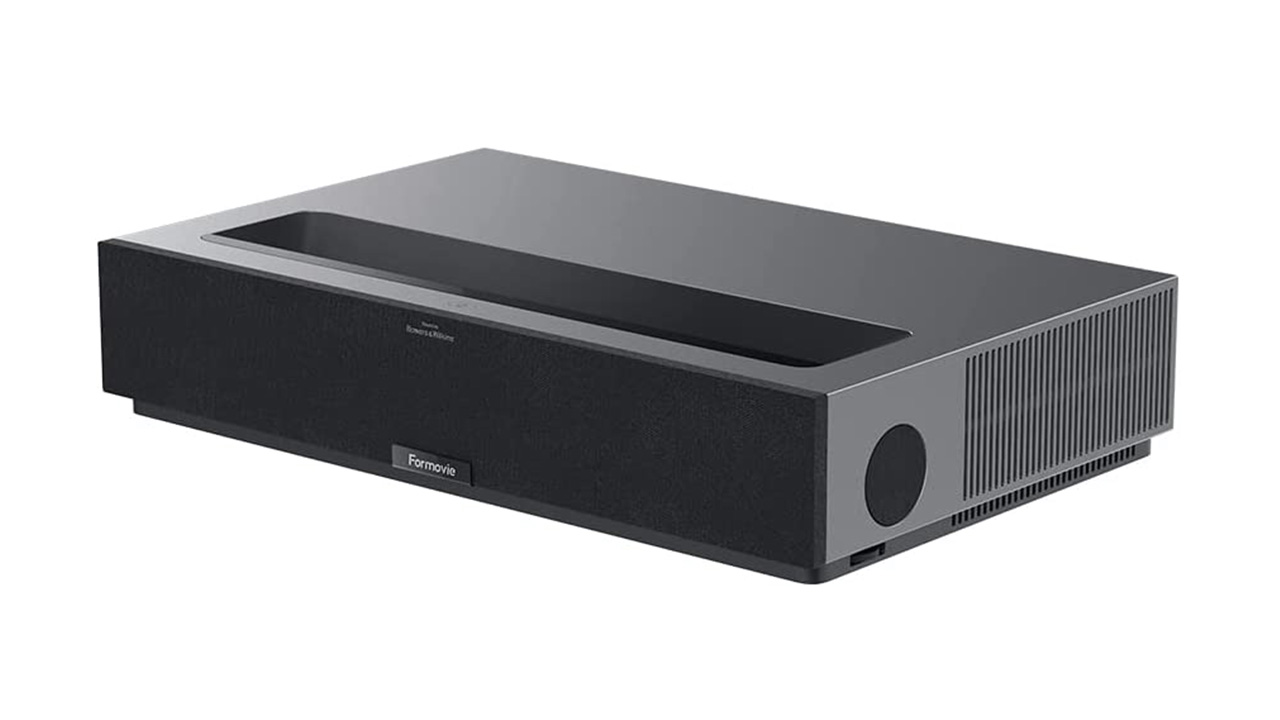
Price: $3,499 MSRP
Brightness: 2,800 ANSI lumens
Resolution: 1920×1080×4
Imager Type: DLP w/ XPR (0.47” single-chip DMD)
Light Source: ALPD 4.0 triple laser, 20,000-hour lifespan
Inputs: Dual HDMI 2.1 + 1 eARC, USB Type-A
Smart Features: Android TV 11
Sound: Dolby Atmos by Bowers & Wilkins
Bundled Screen: No
TV Tuner: No
The Formovie Theater is a high-end ultra-short-throw (UST) projector, also known as a Laser TV. Thanks to its ALPD 4.0 triple-laser technology—the same lasers used in many movie theaters—it delivers bright, vibrant images.
Being a UST projector, it can sit just inches from the screen, which means no ceiling mounts, fewer wires, and no chance of someone walking in front of the image. With improved picture quality and lower prices, Laser TVs like this are starting to replace traditional living room TVs.
Formovie is a joint venture between Appotronics (a leading laser projector tech company) and Xiaomi, one of the world’s largest tech manufacturers. The Formovie Theater even won first place at the 2022 Ultra Short Throw Laser TV Showdown.
AWOL Vision LTV-3000 Pro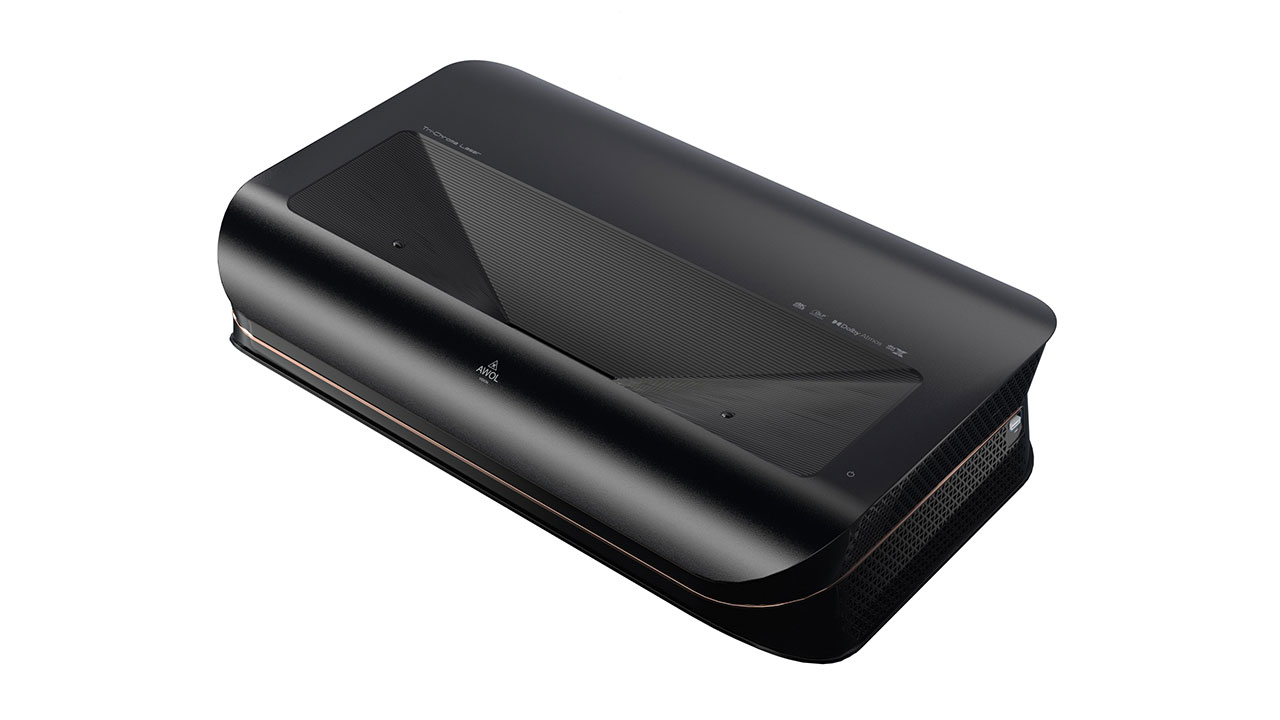
AWOL Vision LTV-3000 Pro Ultra-Short-Throw Projector
Price: $3,999 MSRP
Brightness: 2,400 ANSI lumens
Resolution: 4K UHD (3,840 × 2,160)
Imager Type: Single-chip 0.47″ DLP (Texas Instruments)
Light Source: RGB triple laser, 25,000+ hours
Inputs: 3× HDMI 2.0b (one eARC)
Smart Features: Android 9.0 OS
Sound: 36W premium onboard system
Bundled Screen: No
TV Tuner: No
The AWOL Vision LTV-3000 Pro is a high-end ultra-short-throw (UST) projector designed to deliver a top-tier home theater experience. Using a Texas Instruments 0.47″ DMD, an NICHA RGB triple-laser light engine, and a Ricoh all-glass lens, it produces sharp 4K UHD images with a 2500:1 contrast ratio.
Its triple-laser light source can reach 3,000 lumens and lasts over 25,000 hours, meaning it could run 8 hours daily for more than eight years—something lamp-based projectors can’t match.
AWOL Vision doesn’t make its own hardware—they source the best tech available, similar to TV brands like VIZIO. This lets them pack advanced features and high-quality components into their projectors, giving users a premium home cinema setup without compromise.
Nomvdic P2000UST-RGB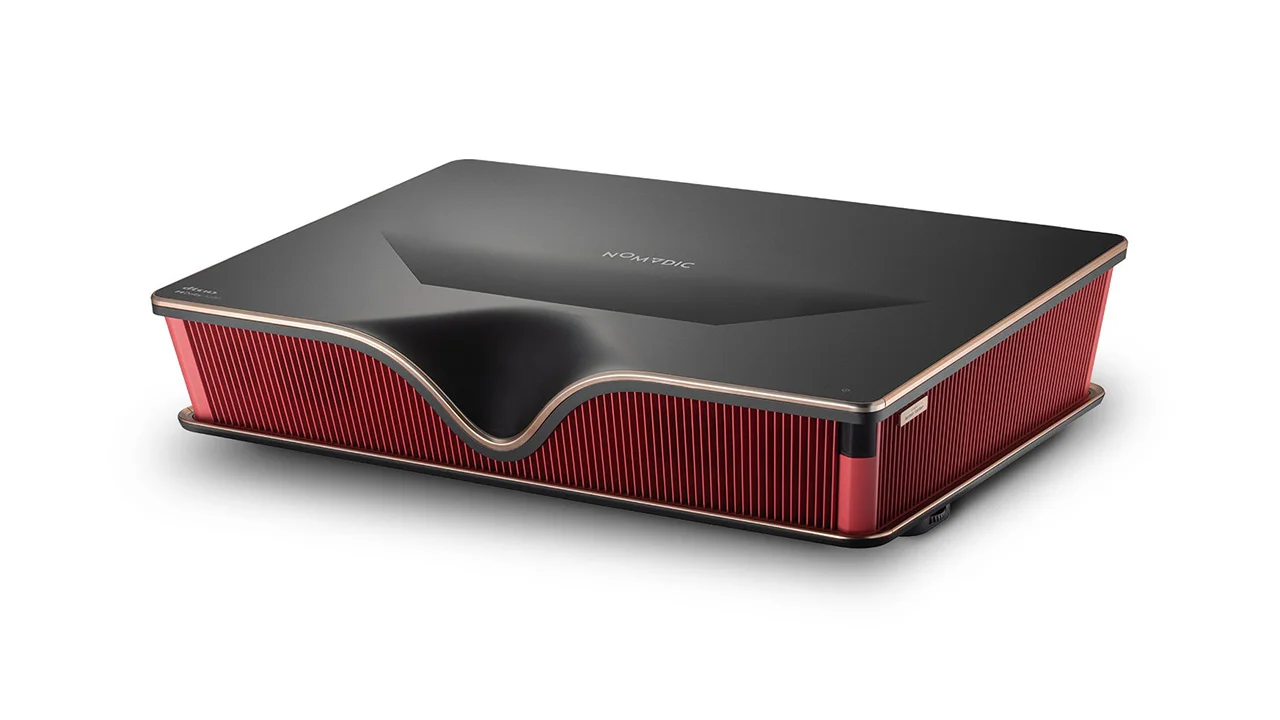
Price: $2,899 MSRP
Brightness: 2,500 ANSI lumens
Resolution: 4K UHD (3840 × 2160)
Imager Type: DLP (0.47” DMD)
Light Source: ALPD 4.0 triple laser, 25,000 hours
Inputs: 3× HDMI (2× HDMI 2.1, 1× HDMI 2.0)
Smart Features: Includes Amazon Firestick 4K Max
Sound: Harman Kardon 50W (2× 25W) with Dolby Digital and DTS
Bundled Screen: No
TV Tuner: No
The Nomvdic P2000 is a smart ultra-short-throw (UST) projector designed for home cinema and gaming. Using a Texas Instruments 0.47″ DMD and ALPD 4.0 RGB+ triple laser, it delivers bright, vibrant 4K UHD images with excellent color and HDR support.
The laser light source is reliable and low-maintenance, rated for 25,000 hours, and produces 2,500 ANSI lumens, meaning you don’t need a completely dark room to enjoy great picture quality. It supports 65–150 inch screens, making it perfect for both big and small spaces.
Gamers benefit from low input lag—32 ms for 4K 60Hz and 16 ms for 1080p 120Hz—and MEMC technology reduces blur and judder for smooth gameplay.
Sound is handled by Harman Kardon’s 50W Dolby Digital system, offering rich audio that beats most TVs and many entry-level soundbars.
Epson EpiqVision Ultra LS650
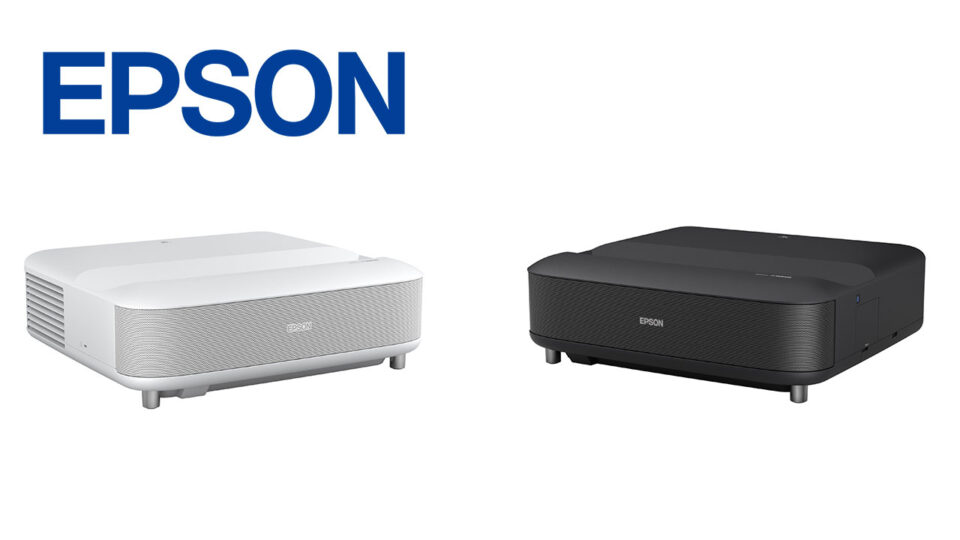
Epson EpiqVision Ultra LS650
Price: $2,799 MSRP
Brightness: 3,600 ANSI lumens
Resolution: 4K PRO-UHD
Imager Type: 3LCD
Light Source: Blue laser, 20,000 hours
Inputs: 2× HDMI 2.0 (HDCP 2.3)
Smart Features: Android TV 11 built-in
Sound: Yamaha 2.1 virtual surround sound
Bundled Screen: No
TV Tuner: No
The Epson LS650 is a bright, 4K ultra-short-throw (UST) laser projector with 3,600 ANSI lumens and a 2,500,000:1 dynamic contrast ratio. It runs Android TV 11 and features a Yamaha-designed 2.1 surround sound system.
Epson has been a leader in ultra-short-throw projectors since 2010, and the LS650 continues that tradition. Compared to earlier models, it has a more compact design, with a traditional UST lens that sits closer to the screen, saving almost four inches in height versus previous models like the LS500.
The LS650 is built for home entertainment, offering bright, crisp 4K images and smart features for movies, shows, and streaming.
EPSON EPIQVISION LS500 LASER TV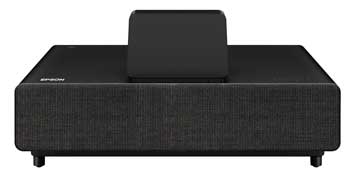
Epson LS500 Laser TV
Price: $2,299 MSRP
Brightness: 4,000 lumens
Resolution: 1080p
Imager Type: 3LCD
Light Source: Laser, 20,000 hours
Inputs: 3× HDMI
Smart Features: Android OS with Google Assistant
Sound: Dual 10-watt speakers
Bundled Screen: Yes (100″ or 120″)
TV Tuner: No
The Epson LS500 is a compact ultra-short-throw (UST) Laser TV that delivers 4,000 lumens, making it bright enough for day or night viewing. It’s bundled with a 100” or 120” Epson SilverFlex™ Ultra AR screen, designed for 4K content and wide 178° viewing angles.
This projector replaces a traditional TV with a massive, sharp image and better sound than most flat panels. It supports streaming services and has HDMI inputs for your cable box, game console, or Blu-ray player.
Gamers will appreciate the ultra-low 16.7 ms input lag, making it responsive for fast-paced gaming. The LS500 is easy to install, runs on a 20,000-hour laser, and comes with Android smart features and a 2-year warranty.
It’s an ideal option for anyone looking for a huge, living-room-ready display without sacrificing brightness, picture quality, or smart features.
BenQ V5000i 4K RGB Laser TV Projector
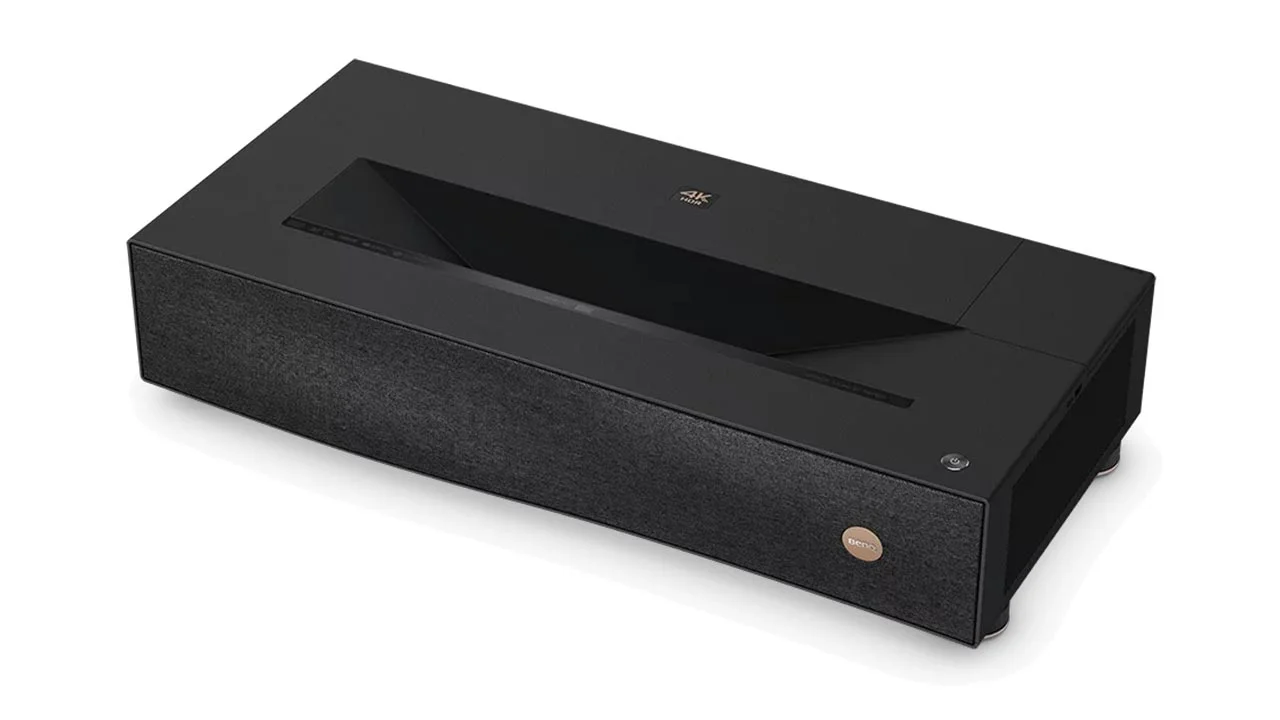
BenQ V5000i Laser TV
Price: $3,499 MSRP
Brightness: 2,500 ANSI Lumens
Resolution: 4K UHD (3840 × 2160)
Imager Type: 0.47″ DLP (RGB Laser)
Light Source Lifespan: 20,000+ hours
Inputs: 2× HDMI 2.0b, 1× HDMI 4K 120 Hz, A/V receiver, 2× USB
Smart Features: Yes (via QS-02 Smart Dongle)
Sound: TreVolo tuned 20W ×2 speakers
Bundled Screen: Yes, 100″ high-gain ALR screen (limited offer)
TV Tuner: No
The BenQ V5000i is a 4K smart ultra-short-throw Laser TV and the successor to the award-winning V7050i. It uses an RGB triple laser light source and offers 98% DCI-P3 color gamut, delivering rich, vibrant colors for movies and gaming.
Designed for “lights-on” viewing, BenQ includes a high-gain ALR (ambient light rejecting) screen, boosting brightness and color even in bright rooms. For a limited time, a 100” ALR screen and home installation are included.
2024 Laser TV Buyer’s Guide – Over $4,000
We’ve organized this guide by price to help you find a projector that fits your budget. In this section, we focus on higher-end projectors—these models offer premium features like multi-laser light sources and advanced optics for an exceptional viewing experience.
LEICA CINE 1 LASER TV

Price: $8,295 (100″) / $8,995 (120″)
Brightness: 3,000 lumens
Resolution: 4K UHD (3840 x 2160)
Imager Type: DLP
Light Source: RGB Laser (20,000-hour lifespan)
Inputs: 3 HDMI
Smart: Google TV with Google Assistant
Sound: 2 x 25W speakers
Bundled Screen: Yes (100″ or 120″)
TV Tuner: Yes
For ultra-premium home cinema, Leica’s Cine 1 Laser TV stands out. Leica, a century-old German brand known for top-quality cameras and lenses, brings the same precision to this projector. Its stylish aluminum body includes a motorized dust cover to protect the lens.
The Cine 1 delivers 3,000 lumens and reproduces over 100% of the BT2020 color space. Triple RGB lasers and a Leica-engineered Summicron lens with four aspherical elements ensure sharp, crisp images with minimal color fringing.
Leica offers two Cine 1 models, optimized for 100″ ($8,295) or 120″ ($8,995) screens. The 120″ model is currently the most expensive 4K UST projector on the market, but its performance and build quality make it worth the price.
It also features Leica Image Optimization (LIO™), which uses advanced algorithms to deliver natural colors, smooth gradations, and enhanced contrast for the best viewing experience.
Hisense L9G TriChroma Laser TV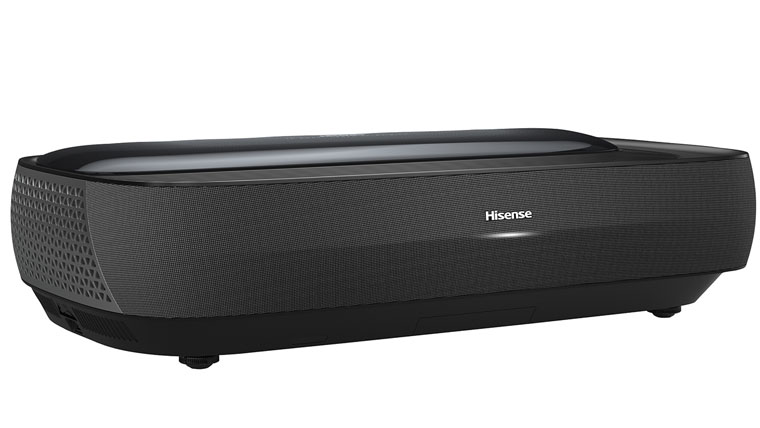
Price: $5,499 / $5,999 (depending on screen)
Brightness: 3,000 lumens
Resolution: 1080p (with 4K upscaling)
Light Source: Triple Laser (25,000+ hours)
Imager Type: DLP
Inputs: 3 HDMI, 2 USB
Smart: Android TV with Google Assistant & Alexa
Sound: 40W Dolby Atmos
Bundled Screen: 100″ ALR Daylight or 100″/120″ ALR Cinema
TV Tuner: Yes
The Hisense L9G is a premium ultra-short-throw projector with a TriChroma RGB 3 Laser engine, delivering stunning colors that cover 107% of the BT.2020 color space—far beyond what any flat-panel TV can show.
It comes with Filmmaker Mode to display content exactly as creators intended, with several picture presets for an out-of-the-box great image.
You can choose from three bundled ALR screens:
100″ Daylight screen for bright rooms
100″ or 120″ Cinema screen for dedicated media rooms
Big picture deserves big sound. The built-in 40W Dolby Atmos system provides a theater-like experience, and high-speed HDMI with eARC lets you pass multichannel audio—including Dolby Atmos—to an external sound system. For audiophiles, the L9G is WiSA Ready, allowing wire-free high-resolution audio to compatible speakers with virtually no latency.
With an onboard TV tuner and multiple inputs, the L9G is a true flat-panel TV replacement, giving you massive images, immersive sound, and smart TV functionality all in one package.
LG HU85LA CINEBEAM THINQ 4K PROJECTOR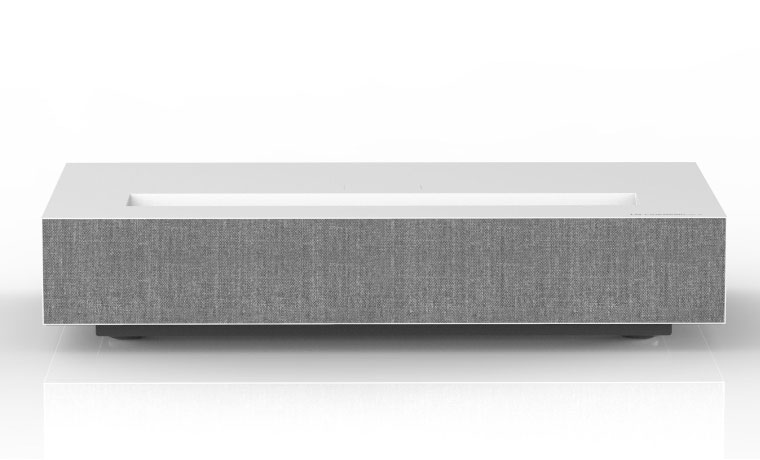
Price: $5,999
Brightness: 2,700 lumens
Resolution: 4K UHD (3840×2160)
Light Source: Dual Laser (Red + Blue), 20,000 hours
Imager Type: DLP (0.66″ single chip)
Inputs: 2 HDMI 2.0, 2 USB
Smart: LG webOS with ThinQ AI, Google Assistant, Alexa
Sound: 5W + 5W stereo speakers
Bundled Screen: No
TV Tuner: Yes
The LG HU85LA is a 4K ultra-short-throw projector designed to replace your TV. Its dual-laser engine improves color accuracy and eliminates the rainbow effect common in many DLP projectors.
It comes with all the smart features you’d expect from an LG Smart TV, including voice control, access to streaming apps like Netflix, Hulu, Disney+, YouTube, and a built-in digital TV tuner for local channels.
HDR lovers will enjoy support for HDR10, HLG, and Dynamic HDR Tone Mapping, while the laser light engine ensures long life and consistent brightness.
In short, the HU85LA packs TV smarts, 4K clarity, and laser longevity into a sleek projector that can truly replace your flat panel.
LG CineBeam HU915QB 4K Laser Projector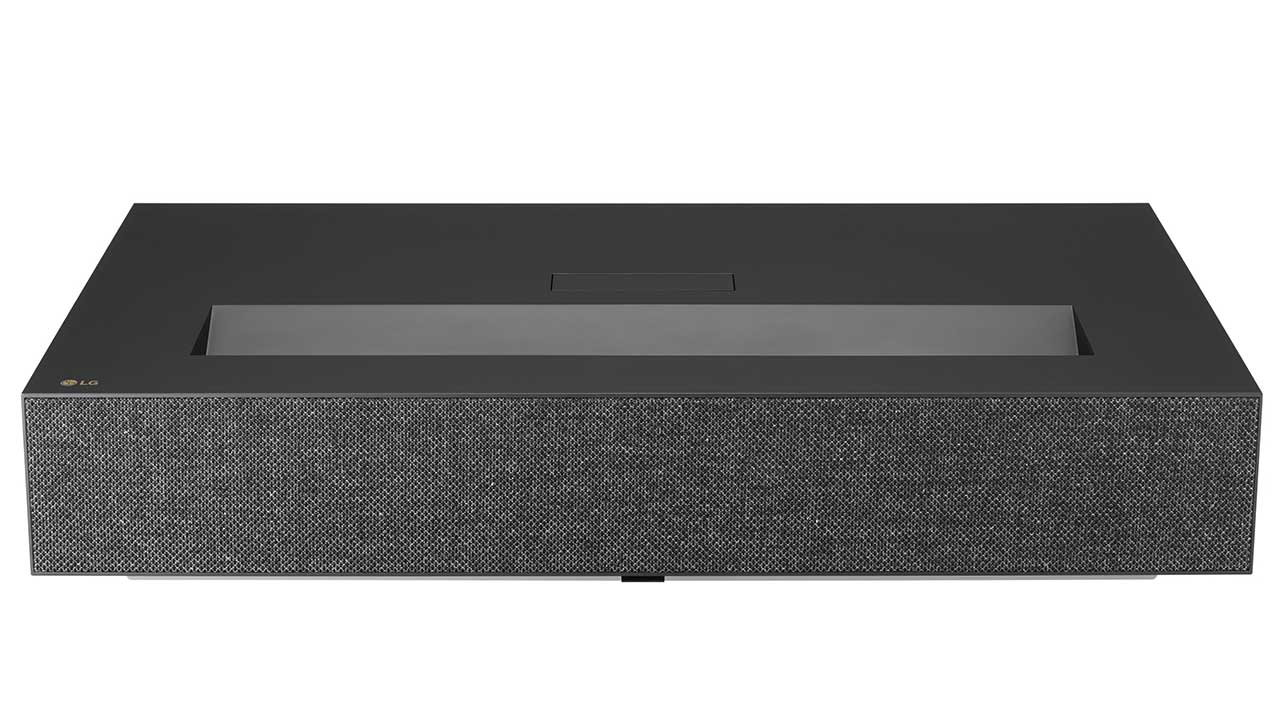
Price: $6,499
Brightness: 3,000 lumens
Resolution: 2716 x 1528 x 2 (4K UHD)
Light Source: Multi-channel laser, 20,000 hours
Imager Type: DLP (.66” DMD)
Inputs: HDMI 2.1 (24Gbps) with ALLM and eARC
Smart: LG WebOS, Google Assistant
Sound: 2.2-channel, 40W
Bundled Screen: No
TV Tuner: Not listed
The LG HU915QB is a flagship ultra-short-throw 4K laser projector from LG’s CineBeam lineup, designed for people who want a bigger, more immersive image than even the largest TVs can offer.
It delivers up to 3,000 lumens and nearly 100% DCI-P3 color coverage, thanks to its multi-channel laser light engine. Like LG’s smart TVs, it runs WebOS, giving you access to Netflix, streaming apps, and all the usual Smart TV features. Google Assistant lets you control the projector and compatible smart home devices with your voice.
Though pricier than most Laser TVs, the HU915QB stands out for its premium picture quality, build, and intuitive interface, making it a top choice for a TV replacement.
2024 Laser TV Buyer’s Guide – Screens
Let’s talk screens. Some Laser TVs come with an ambient light rejecting (ALR) screen, but not all. Yes, you can point a projector at a plain wall or sheet, but you’ll get a much better picture with a proper screen. Walls and sheets aren’t as smooth as you think, and a high-quality projection screen removes those imperfections for a sharper image.
If you want to fight off glare from room lights or sunlight, an ALR screen is the way to go. These have a special coating that reduces the impact of ambient light, so your picture stays bright and vivid.
Matte white screens also work fine with ultra-short-throw projectors, but for the best results, look for an ALR screen made specifically for UST models.
Pair the right screen with the right projector, and you won’t have to turn off every light to get a killer picture.
Aeon CLR® 3 Series
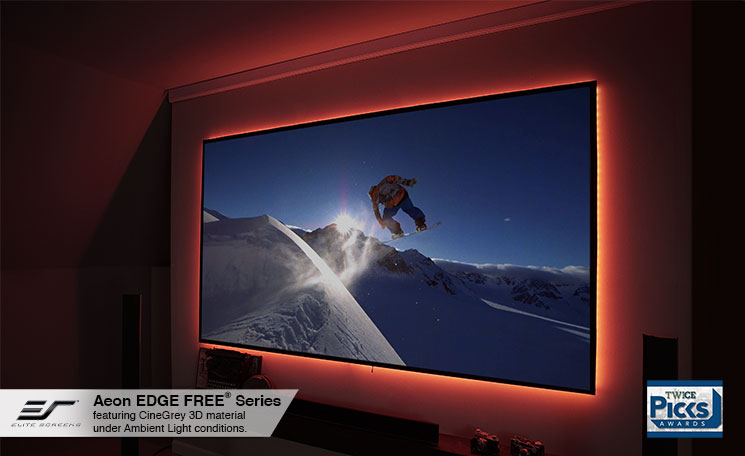
The Aeon CLR® 3 is a fixed-frame projection screen made specifically for table-top ultra-short-throw (UST) projectors. It uses Elite’s StarBright CLR® 3 material, designed to block up to 90% of overhead light, so your picture stays bright and clear even with the lights on. This is thanks to its special micro-serrated surface, which absorbs unwanted light and boosts contrast—up to 75 times higher than a standard matte white screen in bright rooms. Plus, it has a super-wide 180° viewing angle, so everyone gets a great view.
Available in sizes from 103″ to 125″, the Aeon CLR® 3 only reflects light coming from below (your UST projector) and absorbs light from above. That means it’s perfect for living rooms, offices, or anywhere with lots of ambient light—but don’t use it with a ceiling-mounted projector, or the image will look dark.
Compared to a regular matte white screen, the CLR® 3 delivers richer colors, deeper contrast, and better brightness, day or night. It’s sturdy, stylish, and can even be upgraded with an optional LED backlight kit for extra flair.
You can buy it directly from Elite Screens or through authorized dealers. If you own a table-top UST projector and want a screen that shines in any light, the Aeon CLR® 3 is a top pick.
SI Solo Pro 2 (Short Throw)
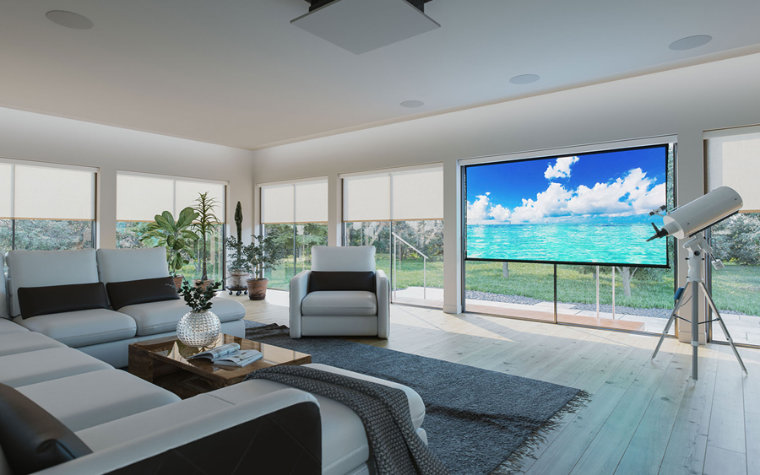
The Solo Pro 2 from Screen Innovations is one of the only motorized screens you can get with Laser TV-focused ALR material—something usually only found on fixed screens like their 5 Fixed, 7 Fixed, and Zero Edge models.
What sets it apart? For one, it looks sleek and modern, fitting into almost any room. It also comes in 12 different screen materials, including one made specifically for ultra-short-throw (UST) projectors in bright rooms.
One of the coolest upgrades is the optional built-in lithium-ion battery. It costs more, but it makes installation super easy—no need to hire an electrician to run power. Just mount it on the wall or ceiling with the included brackets, and you’re set.
Thanks to Screen Innovations’ Short Throw 0.6 gain material, you’ll get a vibrant, colorful picture even with some lights on—perfect for replacing a regular TV. The special coating rejects 90% of ambient light, compared to under 10% with a standard screen. The Solo Pro 2 with ALR material is available in sizes up to 120″ (16:9).
Stewart Filmscreen Balon Series (BlackHawk UST)
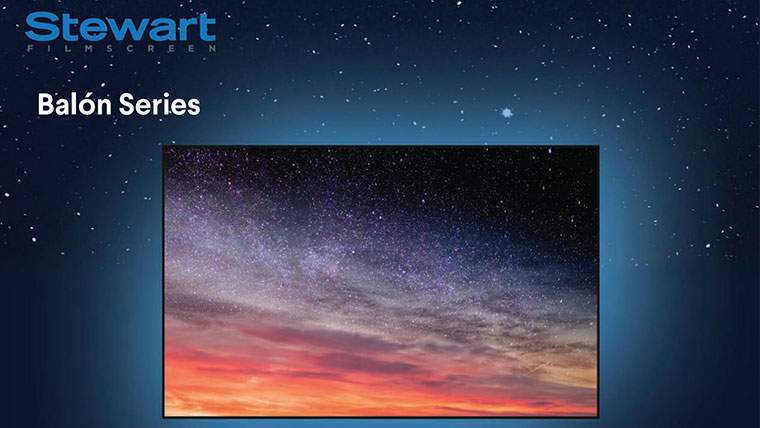
The Balon Series from Stewart Filmscreen is a sleek, modern ALR screen that delivers outstanding picture quality.
It’s available with Stewart’s BlackHawk UST material, designed specifically for ultra-short-throw projectors. This .055 gain semi-rigid screen has an optical structure that cuts down on reflected light from walls, ceilings, and floors. It can reject ambient light from both above and the sides—so overhead lights and nearby windows won’t wash out your image.
By blocking up to 80% of ambient light, it delivers rich black levels and accurate grays without needing a completely dark room. Like all Stewart screens, it offers uniform brightness and excellent color accuracy from center to edge.
The Balon Series has a slim border that blends into any room, with optional LED backlighting for extra style. Available in sizes up to 120 inches (16:9) with the BlackHawk UST material.